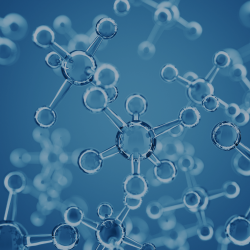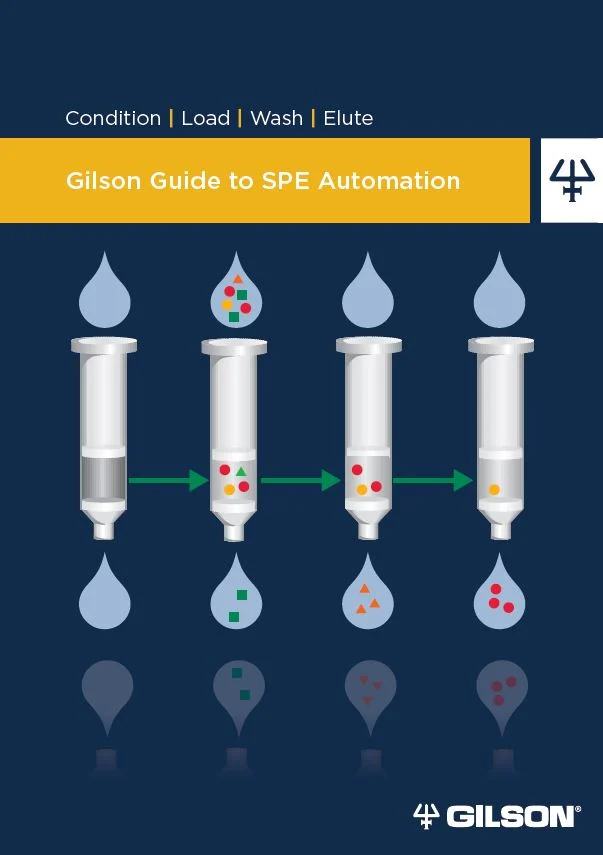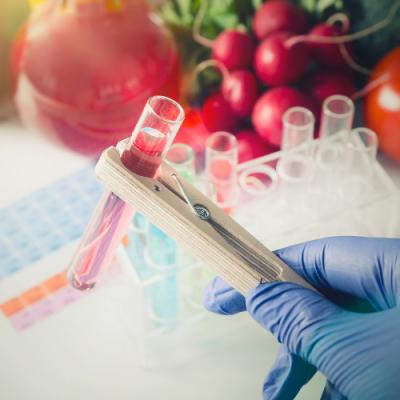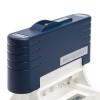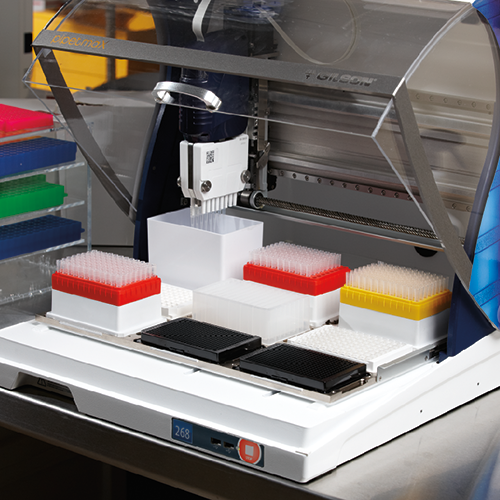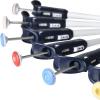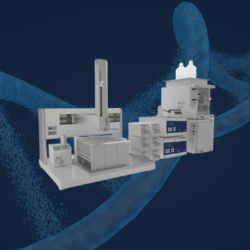From cookware to cod livers, perfluoroalkyl and polyfluoroalkyl substances (or PFAS) are found everywhere. At first glance, PFAS are helpful chemicals that have improved the performance of countless industrial and consumer products across the globe. But look a little closer, and you’ll see these synthetic substances pose significant risks to human and animal health, and the environment.
In this article, we explore what PFAS are, the associated health and environmental concerns, and how researchers can analyze PFAS contamination in the environment.
What are PFAS?
PFAS are man-made organic substances that contain a hydrophobic fluorinated alkyl chain (C-F) and a hydrophilic functional group such as carboxylic acids (PFCA), sulfonic acids (PFSA), or alcohols. C-F bonds are among the strongest in nature, consequently meaning that PFAS are highly stable and resistant to chemical, physical, and biological degradation
It’s therefore no surprise that PFAS have been used in many products such as non-stick cookware, stain-and water-resistant textiles, firefighting foams, and even industrial processes such as chrome plating and electronics manufacturing, since the 1950s. To date, more than 9,000 PFAS are known, although some studies indicate that many more PFAS remain undiscovered or unidentified.1
PFAS Contamination Threatens Environment, Animals and Humans
The same property that makes PFAS such a valuable material also makes them a concern —their high stability. They are so stable that PFAS are also known as “forever chemicals”, with some of them classified as Persistent Organic Pollutants (POPs).
PFAS reach the environment through various sources, including industrial discharges, wastewater treatment plants, and firefighting foams. They can contaminate surface water, groundwater, and drinking water, and accumulate in soil, sediment, and biota. They are also ubiquitous in the air and dust indoors.
And what about us? PFAS can reach the human body through both direct and indirect routes. Those in certain industries, such as chemical manufacturing and firefighting, for example, risk direct exposure to PFAS. Meanwhile, the general population and animals face exposure indirectly through the food chain. As living organisms absorb these chemicals more rapidly than they eliminate them, they can bioaccumulate, which is seen in edible marine species such as cod, for example. Consequently, PFAS can biomagnifythrough the food chain up to us.
PFAS Impacts Wildlife and Public Health — But Regulations are Tightening
While the thought of PFAS bioaccumulation is unpleasant, is it dangerous? Unfortunately, recent evidence suggests so. Research is increasingly linking exposure to certain PFAS with adverse health effects,2 including:
- Developmental effects such as lower birth weight
- Liver damage
- Immunological effects, including asthma
- An elevated risk of certain cancers such as testicular and kidney
PFAS have a significant impact on ecosystems and biodiversity, too, particularly as they disrupt the normal functioning of plants and animals. What’s more, PFAS have been linked to population declines in sensitive species such as birds of prey and marine mammals.
Because of these risks, two of the most frequently used PFAS have been listed in the annexes of the Stockholm Convention on Persistent Organic Pollutants (POPs) —perfluorooctanesulfonic acid (PFOS) in 20093 and perfluorooctanoic acid (PFOA) in 20194 —a regulation that aims to eliminate their production and use. Other PFAS, such as perfluorohexanesulfonic acid (PFHxS) are currently under consideration for listing. Regardless of their legal status, however, it is vital to note that such compounds will remain present in nature for many years.
As our knowledge of their risk increases, more stringent regulations are being enforced. In the European Union, for example, the concentrations of PFAS compounds in food have been regulated since early 2023. The regulation, European Commission Regulation (EU) 2022/2388,5 aims to limit human exposure to harmful amounts of PFAS (including PFOS, PFOA, and PFNA) by fixing different maximum levels of concentrations according to food matrices such as eggs, seafood, and pork.
To make the right regulatory decisions and gain a deeper understanding, we must be able to accurately analyze an increasing number of PFAS across a wide range of matrices at varying concentrations. For example, it is essential to determine the geographical distribution of PFAS in the ocean to identify hotspots and assess whether (and which) foods from areas present a risk to the population.
Solid Phase Extraction: Effective Cleanup of Complex Matrices Before Analysis
To protect expensive analytical systems or to improve limits of detection and quantification, most analytical workflows feature a sample preparation step. Solid phase extraction (SPE) has become the technique of choice for sample isolation/clean-up and trace enrichment before analysis due to its versatility, selectivity, and low solvent usage.
SPE is based on a selective partition of the compounds of interest between a solid phase (where the sorbent is contained in an SPE column) and a liquid phase. The analytes of interest are isolated and concentrated on the solid phase during the sample loading, while impurities that could disturb subsequent analyses are eliminated and then recovered in a small volume of the pure solvent.
Many sorbents are available, making SPE one of the most universal sample preparation techniques available for isolating PFAS from a wide variety of liquid matrices, including liquid samples and liquid extracts from solid samples.
As PFAS are typically present at low levels, SPE is commonly used to enrich them from a large volume of waterso they reach an acceptable limit of quantification (LOQ). For complex matrices, such as fish tissues, PFAS are extracted using an organic solvent. Then, SPE is used to remove co-extracted impurities and strongly decrease the undesired matrix effects on the analytical results reliability.
Gilson's Guide to SPE Automation
This guide is both a resource and step-by-step troubleshooting handbook. This guide provides a background for the technique and explains the science of solid phase extraction (SPE). It also offers practical advice for automating workflows via Gilson SPE systems and software.
Download
Improve Reliability and Sample Preparation Throughput with Automated SPE
Unlike some other sample preparation techniques, SPE can be fully automated, offering analytical labs three key benefits:
- Accuracy: Highly selective cleanup eliminates matrix effects in certain samples, while automation reduces human error
- Reproducibility: Constant flow rates make processes consistent
- Time saved: Automating cleanup reduces operator input, and running overnight increases the throughput
Systems that offer automated parallelization to prepare several samples at the same time, such as Gilson’s ASPEC® 274 system, are also good solutions to speed up results collection —for example, for feed and food quality controls in PFAS analysis.6
It is important to note that instruments can have parts that leach, which risks contaminating samples and yielding false information. To comply with a given application, there must be no material leaching that threatens the result's quality. For instance, to comply with PFAS analysis, the system should not have any parts that contain fluoropolymers (such as fluorinated ethylene propylene (FEP), polytetrafluoroethylene (PTFE), or polyvinylidene fluoride (PVDF)).
Now that we’ve seen the benefits of automated SPE, how is it used in practice for PFAS analysis?
Understanding PFAS Ocean Contamination Distribution Through Cod Livers
PFAS can be found in seawater but at very low levels. A way to measure PFAS pollution in the sea with higher sensitivity (to determine geographical pollution distribution, for instance, or to identify any potential local sources of contamination) is by analyzing bioaccumulated PFAS in the tissues of an aquatic species.
However, as previously explained, analysts quantifying PFAS in complex samples such as cod liver need to overcome matrix effects —owing to the protein and phospholipid content of samples or other background concentration interference —before analysis. SPE can clean up the sample, overcoming these effects.
A recent study used SPE to purify cod liver extracts for PFAS quantitation and sea contamination mapping.7 After extracting the analytes with methanol under ultrasound followed by centrifugation, the diluted supernatants were cleaned by SPE using 3 mL WAX (Weak Anion Exchange) columns automated with the Gilson ASPEC® System. The samples were then analyzed by liquid chromatography with tandem mass spectrometry (LC-MS/MS).
The SPE was so effective at cleaning up the sample that even small variations between PFAS quantities (particularly PFOS) could be found, helping researchers identify differences in pollution levels between different areas.
SPE: Simpler Sample Cleanup for Clearer PFAS Insights
It’s becoming ever clearer that PFAS can significantly impact human and animal health. And it’s hard to escape the risk when PFAS are so widespread and persistent in the environment. For regulators and decision-makers to determine the best strategies to protect health and habitats, they need to better understand PFAS distribution and quantities.
Automated SPE plays a pivotal role, helping separate the analyte of interest accurately, reproducibly, and time-efficiently for greatly improved PFAS sample analysis. With cleaner samples, we can more easily get the information needed to determine how to minimize the impact of these “forever chemicals” on everyday life.
Environment & Food Safety
As we find new ways to grow food, clean our water supply, and identify new pathogens, it is increasingly important to make sure your application is accurate and optimized to ensure quality, nutritious food and a safe environment for us to live in. From analyzing pesticides on crops to identifying perfluorinated compounds in water, your food safety and environmental applications can benefit from Gilson’s range of extraction and liquid handling solutions.
Learn More
1Koch, A. et al. (2019). Point source characterization of per- and polyfluoroalkyl substances (pfass) and extractable organofluorine (EOF) in freshwater and aquatic invertebrates’, Environmental Science: Processes & Impacts, 21(11), pp. 1887–1898. doi:10.1039/c9em00281b.
2Interstate Technology Regulatory Council (2022). Human and Ecological Health Effects and Risk Assessment of Per- and Polyfluoroalkyl Substances (PFAS). Accessed 22 Aug 23. Available at Interstate Technology Regulatory Council (2022). Human and Ecological Health Effects and Risk Assessment of Per- and Polyfluoroalkyl Substances (PFAS). Accessed 22 Aug 23. Available at https://pfas-1.itrcweb.org/wp-content/uploads/2022/09/HH_Eco_PFAS_Fact-Sheet_082422_508.pdf.
3(2019) REGULATION (EU) 2019/1021 OF THE EUROPEAN PARLIAMENT AND OF THE COUNCIL, Official Journal of the European Union. Available at https://eur-lex.europa.eu/legal-content/EN/TXT/PDF/?uri=CELEX:32019R1021.
4PFASs listed under the Stockholm Convention. Stockholm Convention website. Accessed December 1, 2023. Available at
https://chm.pops.int/Implementation/IndustrialPOPs/PFAS/Overview/tabid/5221/Default.aspx.
5(2022) COMMISSION REGULATION (EU) 2022/2388, Official Journal of the European Union. Available at https://eur-lex.europa.eu/legal-
content/EN/TXT/PDF/?uri=CELEX:32022R2388.
6Guidance Document on Analytical Parameters for the Determination of Per- and Polyfluoroalkyl Substances (PFAS) in Food and Feed. May 11, 2022. Accessed December 1, 2023. https://eurl-pops.eu/news/guidance-document-pfas.
7Valdersnes S, Nilsen BM, Breivik JF, Borge A, Maage A. Geographical trends of PFAS in cod livers along the Norwegian coast. PLOS ONE. 2017;12(5). doi:10.1371/journal.pone.0177947.

















